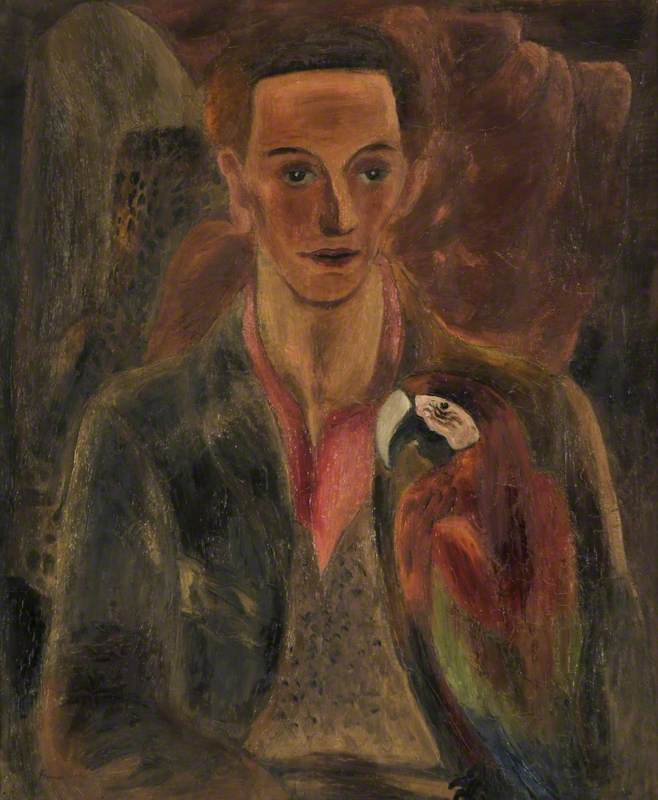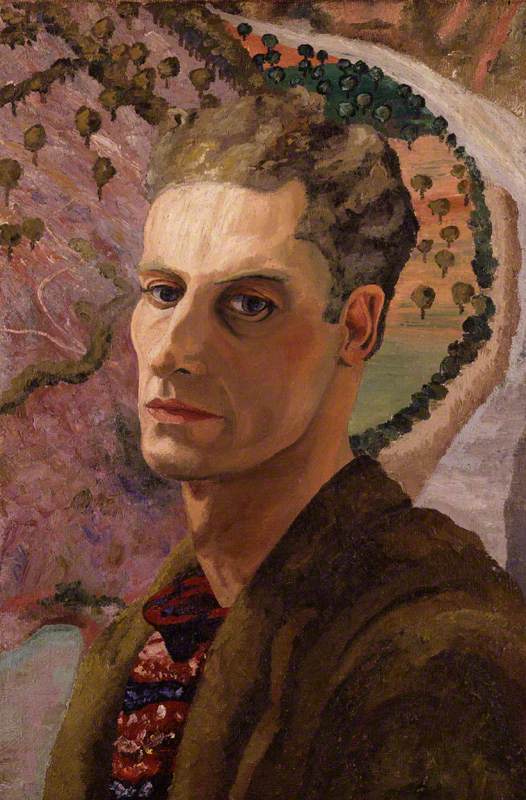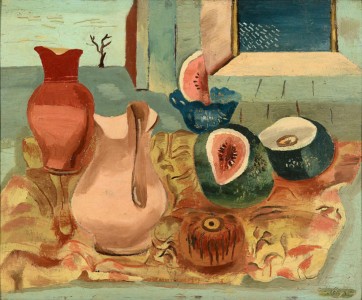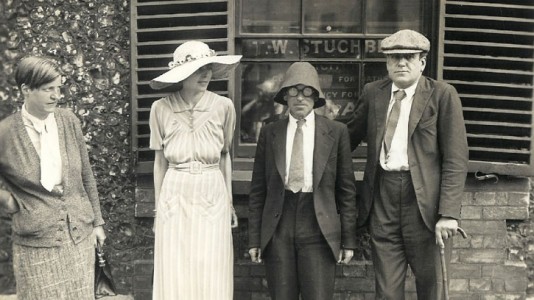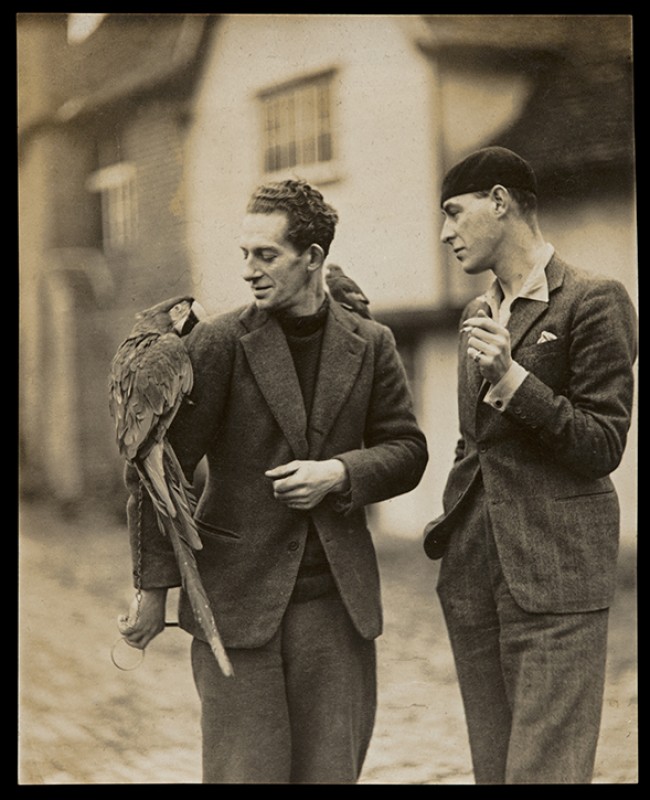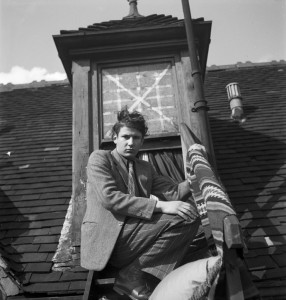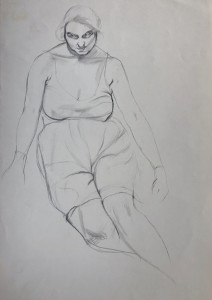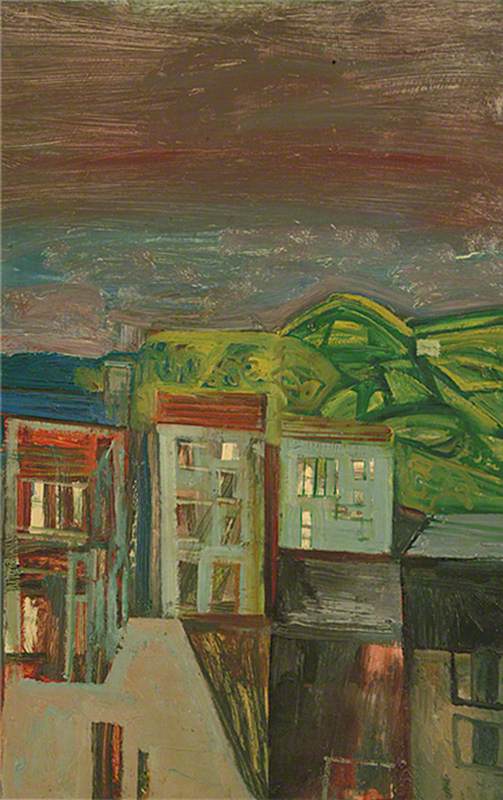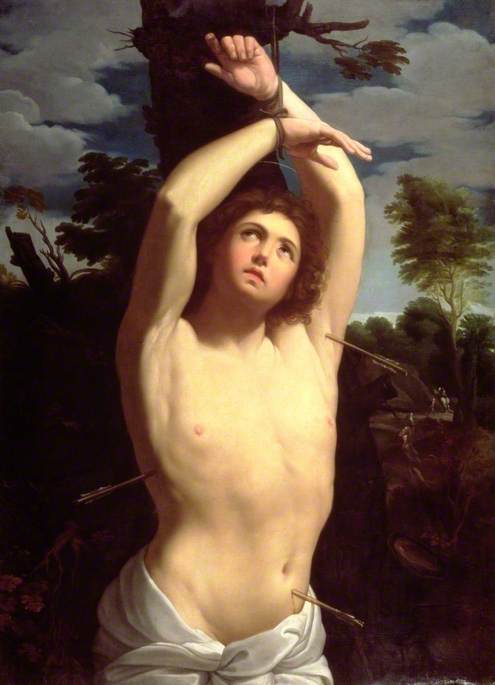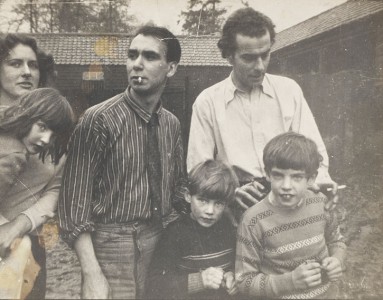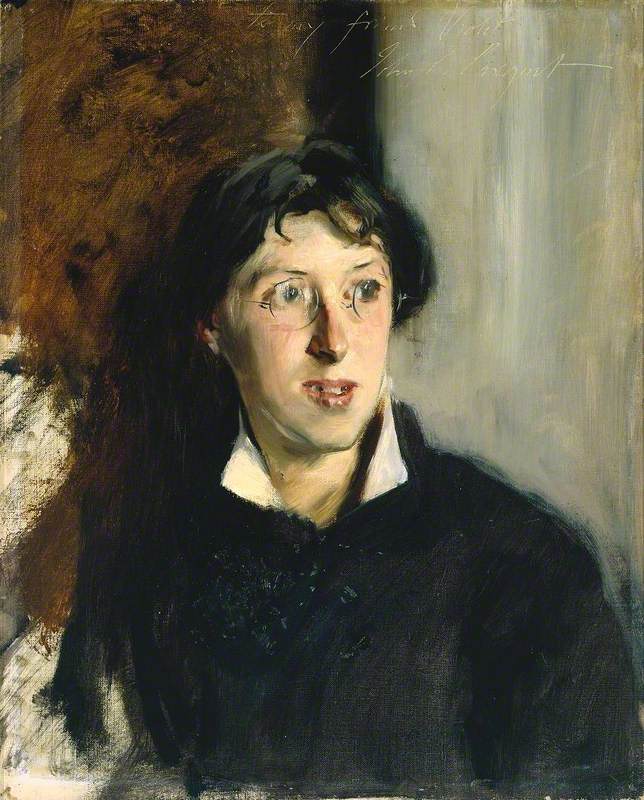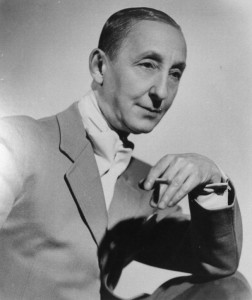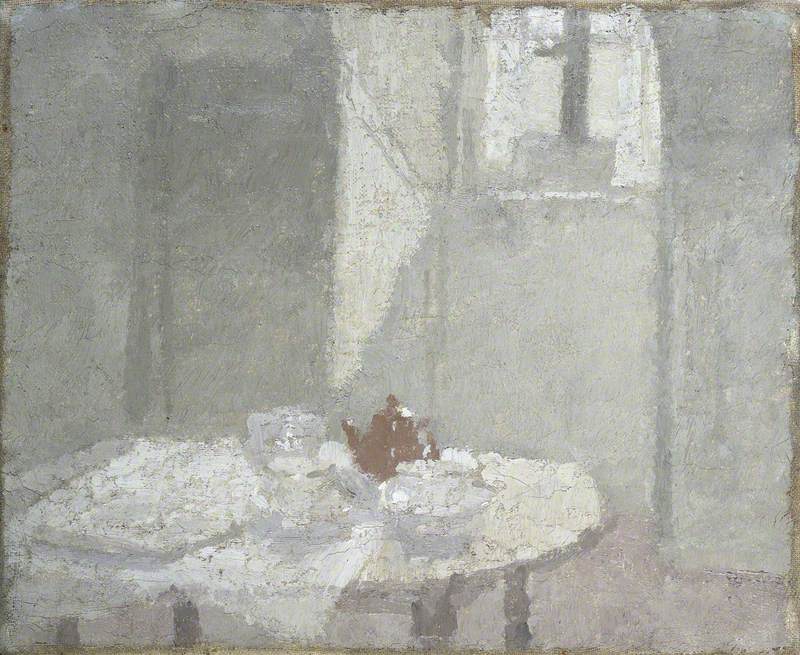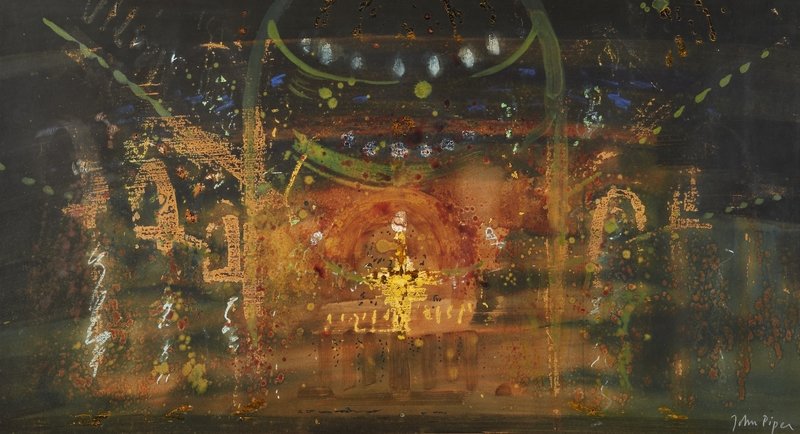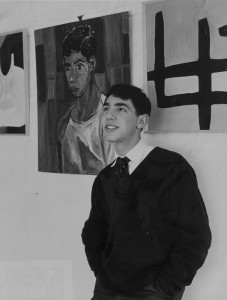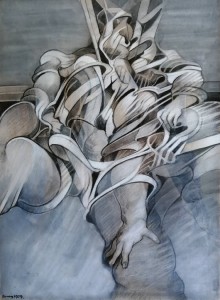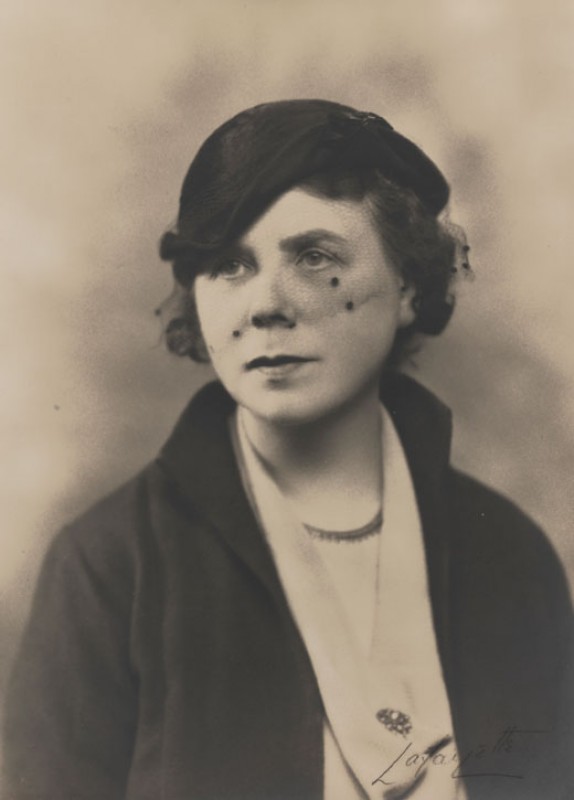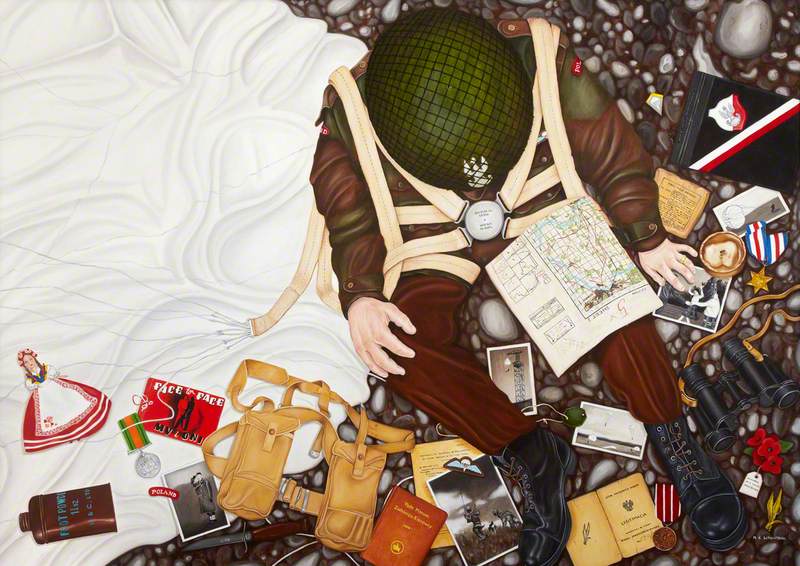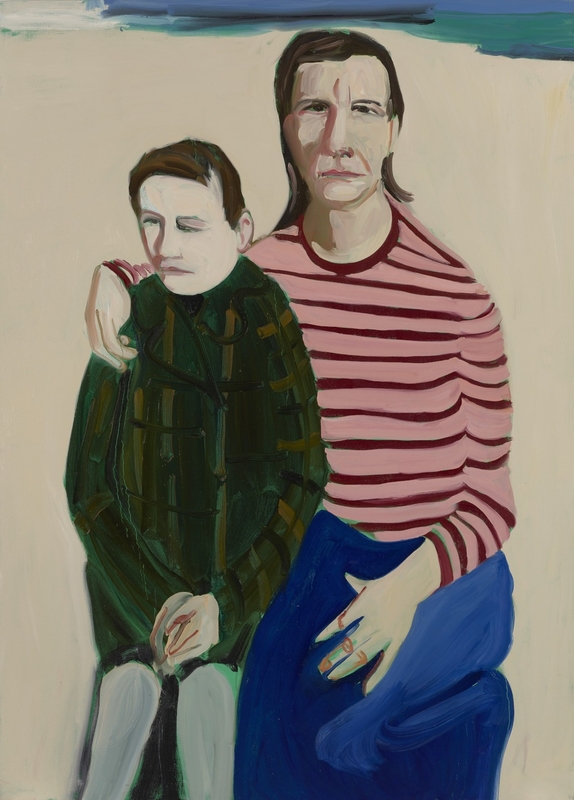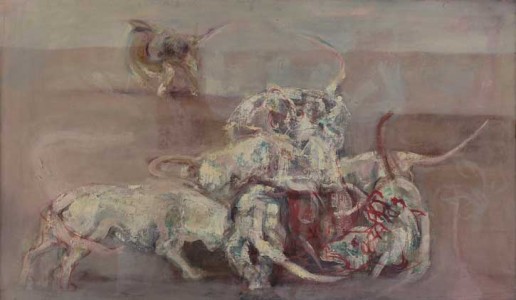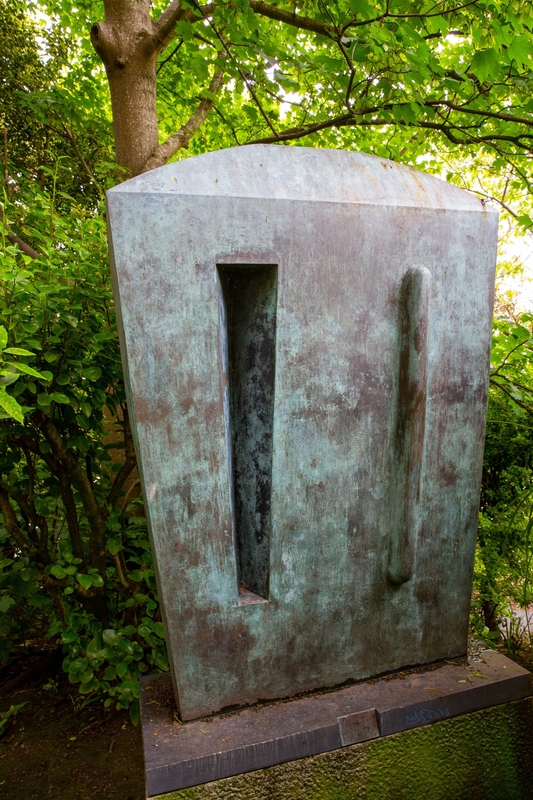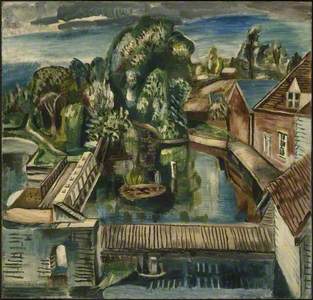In collaboration with Towner Eastbourne, 'Queering the collection' highlights LGBTQIA+ artists and subjects in the collection, written by Collectively podcast host and artist Renee Vaughan Sutherland.
On first viewing Frances Hodgkins' 1930 painting Cedric Morris (Man with a Macaw), what struck me was the intimacy captured between artist and sitter. The subject's face, accentuated by a pink cravat, radiates a beauty and a quiet self-assuredness as he gazes off into the distance. Behind him appears to be objects covered in dust cloths, or perhaps a jumble of clothes whose muted colours collapse the space within the frame but still ensure that the focus accentuates the sitter. In the right-hand corner and perched on the arm of man is a large exotic bird that has one of his eyes firmly fixed on the viewer.
I was not previously familiar with the names of either the painter or sitter, but there was a queerness to the image which led to me to quickly assume that this portrait was painted by a male lover of the subject. I was half right. The sitter, Cedric Lockwood Morris, 9th Baronet was indeed gay and the bird sitting on his arm in the painting was, by all historical accounts, colourful in more than one way – it possessed a filthy repertoire that would amuse (or offend) those within its vicinity. I was a little less on the money when it came to the painter. Frances Hodgkins was a woman and to compound the shame of my misgendering, on researching discovered she was a renowned artist with numerous works in public and private collections.
Sir Cedric Morris (1889–1982) - Frances Hodgkins, c.1917. pic.twitter.com/fdowYuN5MH
— Cristian Gonzalez (@krisda74) February 16, 2015
Hodgkins met Morris in Cornwall towards the end of the First World War, and it was at this time he painted her portrait. They remained in contact and over a decade later she went to stay with Morris and his life-partner Arthur Lett-Haines, both of whom were living in Suffolk. There, she painted the portrait now belonging to Towner Eastbourne – Cedric Morris (Man with a Macaw). They remained firm friends right up until Hodgkins' death in 1947.
Beyond her artistic talent and abilities, what piqued my interest was the fact that Hodgkins and I shared a number of similarities. Despite her being born a century earlier, she was an antipodean and had travelled and studied in Europe, eventually settling in Britain. She pursued her art-making – which at times was fraught owing to the instability of income.
All her closest friends – male and female – were known to be queer. She never married, rejecting the expectations placed on women in the early twentieth century. Now I'm mindful that making assumptions about another person's sexuality, especially in a historical context, is problematic and best avoided, however I quickly discovered that I was not alone in my assumptive leanings.
There are a number of people who have written or spoken about Hodgkins' sexuality – most notably art historian Joanne Drayton and Dr Alison Laurie, former Director of the Gender and Women's Studies at Victoria University of Wellington. Through analysing Hodgkins' correspondence with family and friends, but also her reliance for emotional and financial support from some of her queer friends such as Morris and Lett-Haines, there is a broad consensus that she herself may have been a lesbian.
Through scratching the surface of other peoples' more detailed research, a picture quickly emerges of Hodgkins' participation within a strong, supportive queer community invested in encouraging each other's creative ambitions, talents and wellbeing. Whether or not Hodgkins was herself gay, she was a fiercely independent woman and a remarkable artist whose life choices would have indeed been deemed queer at the time – if not today.
Renee Vaughan Sutherland, artist and host of Towner Eastbourne's podcast Collectively
